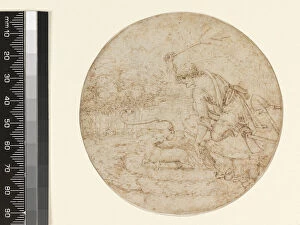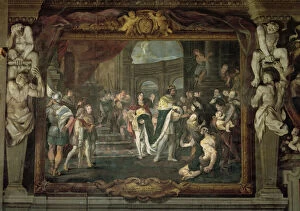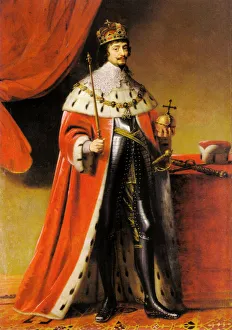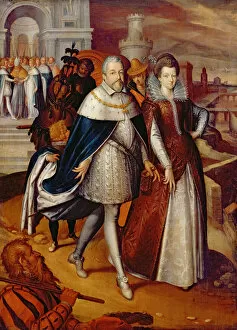Ermin Collection
"The Ermine: A Symbol of Purity and Power" The ermine, a small yet majestic creature, has long been revered for its symbolic significance
All Professionally Made to Order for Quick Shipping
"The Ermine: A Symbol of Purity and Power" The ermine, a small yet majestic creature, has long been revered for its symbolic significance. In the artwork "The Ermine as a Symbol of Purity, " created in 1494, we see the artist's interpretation of this noble animal. With delicate pen strokes over black ink on paper, the ermine is depicted as a representation of purity and innocence. Fast forward to 1761-64, where we find the Earl and Countess of Mexborough posing with their son Lord Pollington in an oil painting. The presence of an ermine fur draped around the countess' shoulders signifies their high social status and power. Moving into the realm of fairy tales, a costume design from 1922 showcases "The King" in Sleeping Beauty. Adorned with regal attire embellished with images of ermines, this character exudes authority and elegance. In another historical context, Francis I is portrayed touching individuals afflicted by the King's Evil at Bologna through a fresco. This act symbolizes his divine right to heal others while being protected by the purity associated with ermines. Shifting gears to politics, Frederick V is depicted as King of Bohemia in 1634. His royal robe features intricate patterns resembling ermines that emphasize his sovereignty and grandeur. Returning to Sleeping Beauty but focusing on Marshal Cantalabutte this time; his costume design from 1921 highlights his importance through ornate details including an elegant cape adorned with images reminiscent of these graceful creatures. Delving into Ottoman history during the third quarter of the 18th century reveals a watercolor masterpiece by Master Soup depicting an elegant scene featuring an exquisite depiction showcasing an ermine amidst opulent surroundings - reflecting both luxury and power. Portraits also capture moments when individuals sought to convey their prestige using symbolism such as Countess Livia da Porto Thiene and her daughter, Portia.












